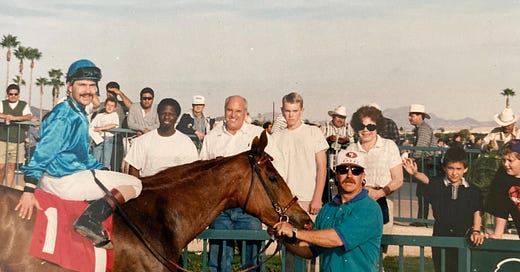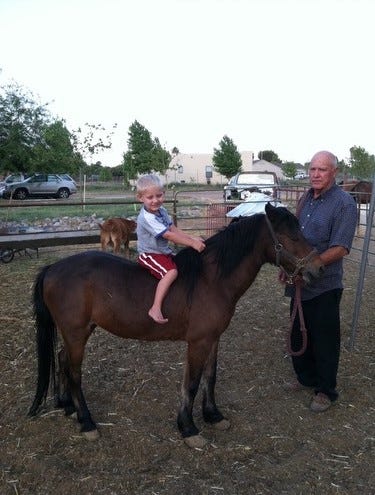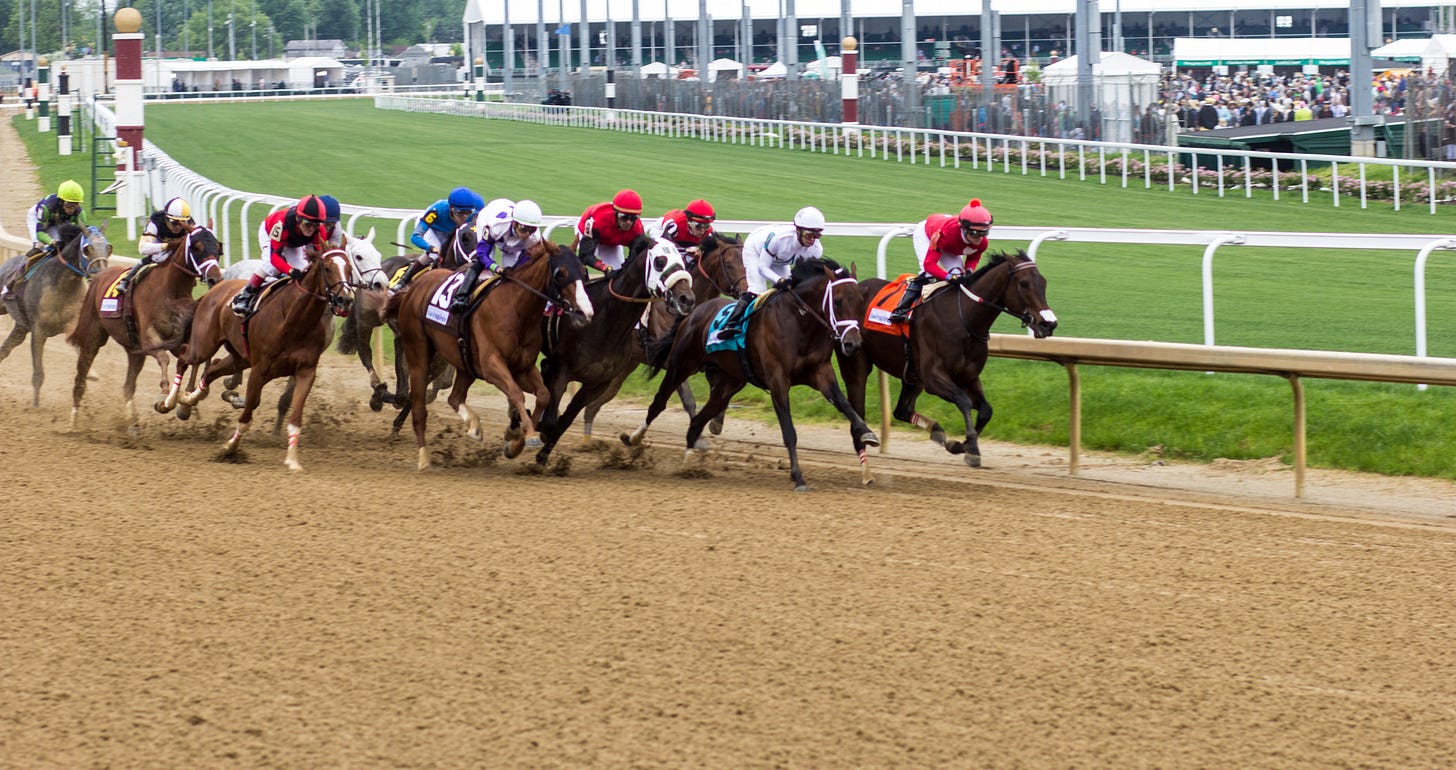Kentucky Derby Winners: The Only Stat That Matters
Visit the home of any one of us eleven Arnett children and you are sure to find the above image framed in some corner of the house. It’s a simple photo of an inconsequential race held on a Wednesday at Phoenix, Arizona’s Turf Paradise. But it means the world to me and my siblings. Standing behind the jockey and winning horse, you can see one of the greatest to ever do it: my dad. And by it, I mean fatherhood, not horseracing. This was, after all, the only race that my dad ever won (as an owner). But that doesn’t mean that he wasn’t extremely knowledgeable and passionate about the sport. He could tell you the winners of every Kentucky Derby dating back to when he was a kid. He could tell you the rarest breeds of thoroughbred horses, and exactly how much they were worth. And he could even explain in detail the most obscure methods of muscle regeneration being practiced by Arabian horse trainers halfway across the world.
He had a talent for seeing patterns and potential in the most unlikely of places, and horseracing was just one of the many areas in his life where he applied this unique talent. He passed away 5 years ago, but every year since then my siblings and I have used this very special, first week of May—the week of the Kentucky Derby—to remember him and all his passions and interests. Were he here today, you better believe that he would have multiple superfecta bets placed, and maybe a couple longshots to place as well. So, let’s place a couple in his name, shall we?
Horse Racing 101
Horse Racing is a beautiful sport, not without its problems as recent steroid and safety scandals would suggest, but thanks to the current wave of technology and analytics sweeping the sport it is becoming even more beautiful (and safe).
There are hundreds of horse racing venues that operate throughout the world, each holding dozens of races each day. The racing surface for these venues will vary greatly, from grass turf to thick fluffy dirt, which adds another element to predicting the performance of a horse and its rider.
A typical race will consist of 10-14 horses, and last no more than about 90 seconds. However, the prize money (stakes) for performing well during those 90 seconds can range from $25,000 to $500,000 for a random Tuesday afternoon race. Win one of those high-stakes races and the prize money will pale in comparison to the money an owner might gain from breeding that winning horse. The stud fee, as it is known in the industry, for these winners can be easily over $100,000 per foal. And, well, sire a few foals and you stand to collect quite a healthy sum of cash.
What Makes the Kentucky Derby So Unique?
- The Stakes
- The Number of Horses
- The Length of The Race
Three million dollars. That’s how much the winner takes home for this one race on Saturday. But in order to do that they will need to beat 19 of the world’s fastest, biggest, and best trained 3-year old thoroughbreds in the world.
That tightly packed field of 20 horses is likely to be the biggest that any of them have run in their entire lives. It presents a new, and unique challenge. However, it is not the only new challenge that Churchill Downs will represent for these horses. The length of the Kentucky Derby is 10 furlongs (1 ¼ miles). This is longer than any of these young horses have run in their entire lives.
The winner of this race will be the horse and jockey able to overcome these two unique challenges.
How do you pick a winner?
In years past my strategy for betting the derby was to read a couple posts by my favorite writers in the industry (The Wizard – Daily Racing Form, check him out!), try and see if there are any obvious trends in last 10 winners (e.g. starting position, previous 3 races leading to derby, etc.), and then place my wagers.
This year, I am going about this differently.
Because the Kentucky Derby is such a uniquely long race for these horses, Endurance is key. That is, how long can a horse maintain their top speed.
When we see a horse really make a run in the final stretch of a race, what is actually happening is that that horse is just decelerating at a slower pace than all the other horses around him. He is not suddenly tapping a new burst of speed and reaching a new max velocity. This point is further illustrated in the graphic below (courtesy of Arioneo).
The decline in velocity from 500 yards out to the finish can be modeled using a logarithmic decay function.
So, the goal for me this year is to identify the horses whose past split times between 500-200 yards (roughly the second to last furlong of the race) and the final 200 yards (last furlong) are as close together as possible.
My picks/predictions for the race
Equine.com has all the past race charts available for you to analyze. Looking at these charts for the three favorites, Fierceness (5-2), Sierra Leone (3-1), and Catching Freedom (8-1), I found that Catching Freedom actually maintained his closing split time better than both the horses favored to beat him. So I have to put my money where my mouth is and place at least one wager on the horse.
But, I’ve also heard far too much about Fierceness to not bet him as well.
So here’s what I am doing:
Bet #1: Catching Freedom to win
Bet #2: Fierceness to place first, Catching Freedom to place second
And maybe a couple other audibles to be called closer to race time…
What’s your strategy for picking winners? Drop me a note or reply to this message! I’d love to hear your thoughts.







